[Western] Reality Isn’t What It Used To Be: The emergence of a revolutionary and post-modern Palestinian cinema in the 1970s
“Historical facts demonstrate that imperialists will commit any crime to protect their interests” — from the PLO film They Do Not Exist (1974)
West and More West?
If we consider that the prevalent understanding of “modernism” is the idea that encompasses a west or Euro-centric 19th Century perspective rooted in the Church, we can establish a basis for understanding the term “post-modern” as being inherently occidental or Western in its argumentative position/disposition. Cultural theorist Stuart Hall clearly stated in his interview conducted by Lawrence Grossberg that, “Modernism itself was a decisively ‘western’ phenomenon.” (46) And, since post-modernism is also a reaction to modernism, one can also consider the possibilities of post-modernism as being a reaction to a critique of the very Euro-centric position, by which modernism is characterized. Hall asks the question, “… Is postmodernism the word we give to the rearrangement, the new configuration, which many of the elements that went into the modernist project have now assumed? Or is it, as I think the postmodern theorists want to suggest, a new kind of absolute rupture with the past, the beginning of a new global epoch altogether?” (46) Therefore, I would argue that East-West or oriental-occidental distinctions can thus be made within post-modernist perspectives. Hall talks about Euro-centrism and Western (American) –centrism and how post-modernism manifested cynically in the former case, and with a blind optimism in the latter case. He explains this in the following manner:
I think the label ‘post-modernism’ especially in its American appropriation (and it is about how the world dreams itself to be ‘American’) carries two additional charges … it says, first, that there is nothing else of any significance — no contradictory forces, and no counter-tendencies; and second, that these changes are terrific, and al we have to do is to reconcile ourselves to them. It is, in my view, being deployed in an essentialist and un-critical way. And it is irrevocably Euro- or western-centric in its whole episteme. (p.46)
By understanding that modernism is west-centric, we can understand that post-modernism is also west-centric and it challenges that specific trajectory of modernist reality, and yet, we know that reality doesn’t exist. As such, the real post-modernism, I argue is the non-western perspective that challenges both western-centric modernism and the subsequent (and dominant) post-modernist discourse which is also western centric. Modernism has its truth claims, but post-modernism in the Western sense also can be argued to rely on the sources of those truth claims in its critique. As such, I argue that in order to truly critique modernist theory and, in essence, disassemble concepts of agency and assemblage, that it’s important to negate existing truths or realities, with the alternative truths that may or may not be situated in the Western or dominant frame of reference. The example that I choose to illustrate this idea is through a film made by the Palestinian Liberation Organization’s Palestine Film Unit (PFU) in 1974, in response (and reaction) to a declared Zionist narrative that sought to establish itself as a universal truth.
In her article about how post-modernism can be used to understand anti-oppressive, leftist, or anti-colonial narratives, Catrina Brown says, “Truth claims legitimized by western science often take the form of totalizing and universalizing grand narratives. Through universalizing one interpretation of truth is presumed to be equally true for all individuals. The claim that these narratives represent objective truth strips them of their social construction, their history, and thereby, their political character, while simultaneously claiming to be the path to human enlightenment, emancipation, and progress.” (1)
In the chapter “Agency” of the book Culture + Technology: A Primer, the authors talk about broader cultural forces that exist and work to construct our realities beyond what is or maybe immediately apparent in front of us in order to explain a “universal undertone” to the causal approach. That, “causal effects are assumed to be the same under any — and every — circumstance. The causal approach cannot grasp the particularities of the situations.” (116). This idea further supports the fact that alternative narratives struggle or find it impossible to find any form of agency in dominant discourse, which remains rooted in western (colonial) narrative. As such, the author’s definition of agency, that “agency is the power and ability to do something, and it assumes an agent that possesses that power”(116), and that agency “is not a possession of agents, it is a process and a relationship” (117) supports my argument that anti-colonial narratives such as the Palestinian narrative have struggled to gain agency and find a place in post-modernist discourse on history or politics. “Palestine” is never given the agency in Western discourse to be spoken of as a historical truth without the connection or inclusion or insertion of Israel’s claims to it.
Introduction
The Palestinian armed struggle first arose in Jordan after the defeat of Palestine and its allies in the 1967 Six-Day War, and the subsequent Israeli occupation of the West Bank, Gaza Strip, Jerusalem, Sinai Peninsula, and Golan Heights. The iconic faces of the Palestinian armed struggle were the dominant Palestine Liberation Organization (PLO) under the leadership of Yasser Arafat, and the Marxist Popular Front for the Liberation of Palestine (PFLP), led by George Habash — and thousands of armed resistance fighters or fedayeen, who fought under them and related factions. The objective of the fedayeen was to liberate Palestine from the Zionist occupation. These fighters were organized, armed, trained and espoused an inherently anti-colonial position and philosophy. Under the PLO, the Palestine Film Unit (PFU) was created as an informal collective of Palestinian fedayeen filmmakers of which Mustafa Abu Ali was a founding member. The PFU had the objective of documenting Palestine, Palestinians and their anti-colonial struggle, and from 1967 until 1982, and they created many documentary films. As Shayma Buali articulates their mission:
“… [the PFU’s] aim was to document everyday life and the extraordinary events that occurred regularly in Palestine during this time. The camera became a tool in this struggle for nationhood, a way for Palestinians to show the realities of the struggle and to take control of their own image, one that was being torn apart by Israel’s systematic erasure of a culture and people.”
These films created by the PFU eventually became part of what became known as the PLO film archive, which went “missing” during the 1982 Israeli invasion of Beirut. Several of these films — mostly copies of originals — have been re-discovered in various conditions and forms in several offices and archives around the world.
They Do Not Exist
For the purpose of this probe, I examine the 1974 PLO film They Do Not Exist (1974, Running Time: 0:24:57), by PLO filmmaker Mustafa Abu Ali, which offers an interesting and relevant example of an artistic, political and cultural production from a distinctly post-modern perspective — it was an unapologetic reaction to the dominant Israeli and Western narrative on Palestinians that was determined to vilify and dehumanize them. The main goal of this film is encapsulated best by the film’s title “They Do Not Exist,” which was a blatant and sarcastic reference to Golda Meir’s infamous claim that Palestinians “do not exist”. On June 16, 1969, the Washington Post published the interview with Meir who was then prime minister of Israel, in which she infamously stated “There were no such thing as Palestinians … They did not exist.” This quote is often referenced by scholars critical of Israel and Zionism to illustrate the absurdity of Zionist attitudes and mythologies towards Palestinians.
In his film, which uses both archive documentary footage as well as scripted scenes, Abu Ali poetically and multi-dimensionally depicts in an almost tongue-in-cheek way how Palestinians very much exist — in exile in refugee camps waiting to return to their homeland while remaining victims of Zionist aggression; and depicts the Palestinian fedayeen fighters as righteous, sensitive heroes of the Palestinian armed struggle, fighting to liberate Palestine from a colonial and oppressive Zionist regime. This narrative, while accepted among the leftist movements and Arab world at the time was the complete opposite of the dominant (Western) narrative on the Palestinian armed resistance at the time, which framed them as violent terrorists. In his film, Abu Ali uses a cinematic and political language characteristic of the 1970s left, to depict the anti-colonial struggle of the Palestinian people, to define and give purpose to the Palestinian fedayeen as freedom fighters against the global imperial hegemonic agenda, who are acting in solidarity with the international struggle against colonialism.
This film is divided into nine acts, separated by inter-titles signifying each as a chapter of the film. The first act is set in the Nabatieh Palestinian refugee camp, in the South Lebanon city of Nabatieh, only a few kilometres from the border with Israel, which has had a substantial population of Palestinian refugees since 1948. In the opening shot, the camera pans right across a line of laundry drying in the wind to a long shot of a woman doing housework. In this first sequence of the film, the director sews together a montage sequence of everyday Palestinian refugees living their life in a refugee camp, with a soundtrack of upbeat, classical instrumental Arabic music. Kids eat ice-cream and play hide and seek in the narrow alleys of the refugee camp where people go about their business, and women and girls care for their homes. A toddler on a tricycle plays with a toy rifle while his mother hangs laundry. Eventually, we see a young girl writing a letter to her brother, a fedai, and hands it to an older man who reads it before nodding and handing it back to her. The voiceover then switches to the man who tells the story of the origin of Nabatieh refugee camp that was founded in 1948 and has 6,000 residents.
The second act of the film, “A Commando (Fedai): Abu Al Abed”, begins with an extreme wide shot of a group of fedayeen who sit around during the day in their Fedai camps in the woods, while the soundtrack of a noble fedayeen anthem plays in Arabic, “Fidai, Fidai / My lost land, my ancestor’s land / Fidai, Fidai / With determination I will fight for it”. The same man who collected the letter arrives at the camp carrying many similar white sacks and hands them over to another Fedai who hands them out to each of the men around the camp. The sack with the letter from the young girl is given to a fedai named Abu Al Abed, who sits smoking and reads the letter thoughtfully.
The third act of the film, is brief, and functions to theoretically situate the film in Marxist, leftist political ideology. Simply entitled “3”, it begins with a shot of an unidentified man telling the camera, [paraphrased from Arabic], that: “Historical facts demonstrate that imperialists will commit any crime to protect their interest.” This shot is followed by sequence of inter-titles declaring the state of global colonial oppression and genocide in “Vietnam, South Africa, Mozambique, American Indians, Nazi Massacres”. This sequence of inter-titles also functions to situate the Palestinian conflict within a global anti-colonial and revolutionary struggle against the dominant Western hegemony, and establishes a leftist solidarity in the anti-colonial movement against Western threat and oppression.
ABOVE & BELOW: Stills from THEY DO NOT EXIST (1974)
The fourth act of the film, “Israeli Air Raid at Nabatia Camp 16/5/1974” is about the Israeli strikes on Nabatieh Camp which razed large sections of the camp and killed at least 48 people, injuring 164. This section begins with a sequence of shots of Israeli planes flying through the air to a soundtrack of joyous orchestral music. The sequence ends and an inter-title stating: “’Palestinians!! Whom they are..?? they never EXIST’ Golda Meir” appears to the sound of planes striking. The orchestral music returns in the next sequence of bombs being loaded onto fighter planes in Israel. Their fighter pilots get in, the planes move into position, take-off and fly in the skies, dropping bombs. The music stops and another inter-title appears stating the quote by Moshe Dayan: “’There is no more Palestine … it does not EXIST’”, most likely in reference to his infamous statement made to TIME magazine’s July 30, 1973 edition.
The fifth act of the film “3/4 of Nabatia camp is razed”, is a sequence of archive footage depicting the near complete destruction of Nabatia camp that occurred in May 1974, allegedly in retaliation for an attack by Palestinian fighters in Ma’alot in the North of Israel. The sequence of these shots showing the destruction in the camp plays to complete silence. In the sixth act of the film “Press conference” we watch a man, likely a camp officer, delivers an official statement to the press:
Take a look at the rubble around you in this refugee camp. Those barbaric air raids against refugee camps by the Zionist airplanes, to camps in Nabatieh, in Ain-el-Hilweh, in the area of Souk-el-Ard, you will realize the fascist mentality of the Zionist leaders in Israel and that prove the intentions of genocides … more struggle is needed to uproot these concepts. It is the same mentality killing their youth in Ma’alot and killing our children and women in the camps, by modern American weapons which keep pouring into Israel. Nazi slogans are raised in Israel. They have brought up their generations with hate against Palestinians saying things like ‘we must terminate them like insects’ and ‘blood for blood’. These are fascist slogans. What is worse is the deceit of the parliament and the cabinet claiming approval on exchange of prisoners and collectively participating in the crime. The aim of our heroes who went to Ma’alot was to free their colleagues from prison. But the leaders of Israel want to increase the abyss between Arabs and Jews, in order to avoid a peaceful coexistence. They use weapons for crimes. We use it to achieve freedom. Our people will never bend to oppression and killing. We are fighting for peace and justice and to establish a democratic state with law.
The seventh part of the film, “Statement by a citizen from Nabatia city” is an interview with a Lebanese eyewitness of the attack who confirms that he saw between 40 and 50 Israeli planes repeatedly bomb the camp, and that many Lebanese people from Nabatia went to the camp to help the people, but were also attacked. In the eighth part of the film, “Statements by some harmed people from Nabatia camp” presents testimonies from surviving Nabatia residents who were injured in the attacks. A mother sits with her children and a photo of her husband that was killed and tells a journalist about what she experienced. Another man tells that he witnessed the raids from afar as he was at work and returned to dig out bodies with men from Fateh. An older man who was injured along with one son, and who lost another son, assertively states that Israel cannot scare them as they are fedayeen, freedom fighters, until the end and are not afraid to die. He will never accept the fact that he is living in a refugee camp and that an Israeli is living in his home in Palestine. Finally in the night and final part of the film, “Abu Al Abed remembers Aida”, we return to Abu Al Abed, the fedai who received the letter and gift from the young Aida, the scribe, in the second act of the film. He sits next to a tree in his fedai camp, and listens to a sad love song on a radio as he mourns her death.
Conclusion
Despite the alternative discourse that the PFU delivered in this They Do Not Exist, the film failed to stimulate debate. The creators of the film and their narrative had no agency within the dominant discourse which actively seeked to construct them as a “terrorist organization” rather than as freedom fighters and representatives of a popular uprising by refugees seeking to return to their homeland which was occupied. Slack would clearly argue that the “Palestinian” narrative thus had no agency because according to her definition, agency is only present when it has “the power and ability to do something, and it assumes an agent that possesses that power” (116). At the same time, the same technology of filmmaking was used by Zionist and Western forces to create propaganda films about Israel, which had incredible agency because they served (effectively) to influence and manipulate public opinion. In this case, as the authors would say, the technology does something more, beyond, and apart from its intended “use”. (117) Finally, if we look to Actor-Network Theory to understand how the maps of these (power) networks are built and function, it has been necessary for the purveyors of the dominant discourse to dehumanize and vilify the Palestinians as sub-human; in order to sustain the Zionist narrative that Palestinians are “Terrorists”, because if they were equally considered “humans” then the conflict would become one of two equal sides, rather than how Zionist propaganda has attempted to frame it as good vs evil. So, when studying Palestinian or Israeli films, it’s worth reflecting on Bruno Latour’s idea of anthropomorphism as “either what has the human shape or what gives shape to humans” (122) — as doing so, will enable one to not only navigate the presence of power intrinsic to the “truth” about agency, but also, by challenging ones understanding of the dominant Israeli (Western) narrative, will enable one to reflect more deeply on where a truly post-modern discourse can emerge from.
Works Cited:
Abu Ali, Mustafa, They Do Not Exist (Palestine Film Unit, 1974), URL: <https://www.youtube.com/watch?v=2WZ_7Z6vbsg>, Accessed on October 21, 2015
Brown, Catrina, “Anti-Oppression Through a Postmodern Lens: Dismantling the Master’s Conceptual Tools in Discursive Social Work Practice,” in Critical Social Work, 2012 Volume 13, Issue No. 1, URL: < http://www1.uwindsor.ca/criticalsocialwork/anti-oppression-through-a-postmodern-lens-dismantling-the-master’s-conceptual-tools-in-discursive-so>, Accessed on October 24, 2015
Buali, Sheyma, IBRAZZ.org, “Militant Cinema: A conversation between Mohannad Yaqubi and Sheyma Buali”, first published on May 21, 2012, URL: <http://www.ibraaz.org/interviews/16>, Accessed on October 21, 2015
Grossberg, Lawrence. “On Postmodernism and Articulation: An Interview with Stuart Hall.” Journal of Communication Inquiry 10 (1986): 45–60.
ITN Source, “Lebanon: At Least 25 Die In Israeli Air Attack On Nabatieh Refugee Camp” Site URL: <http://www.itnsource.com/shotlist//RTV/1974/05/18/BGY509100297/?s=> Site accessed on December 25, 2014.
Slack, Jennifer Darryl, and J. Macgregor Wise. “Agency”, “Articulation and Assemblage.” Culture + Technology: A Primer. New York: Peter Lang, 2005. 115–33
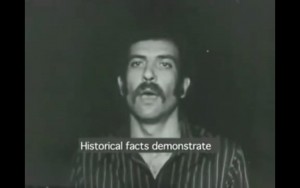
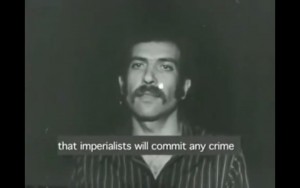
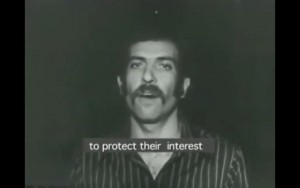
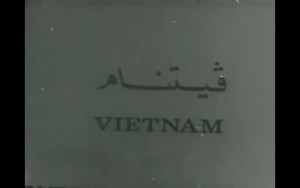
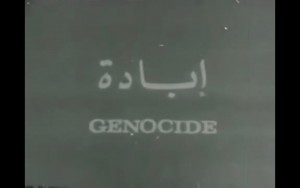
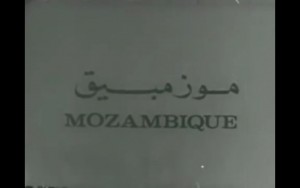
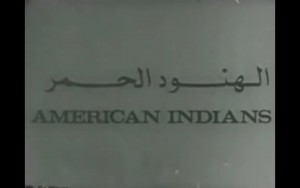
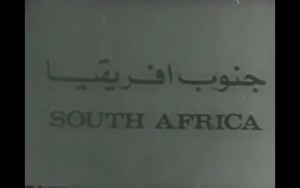

A+